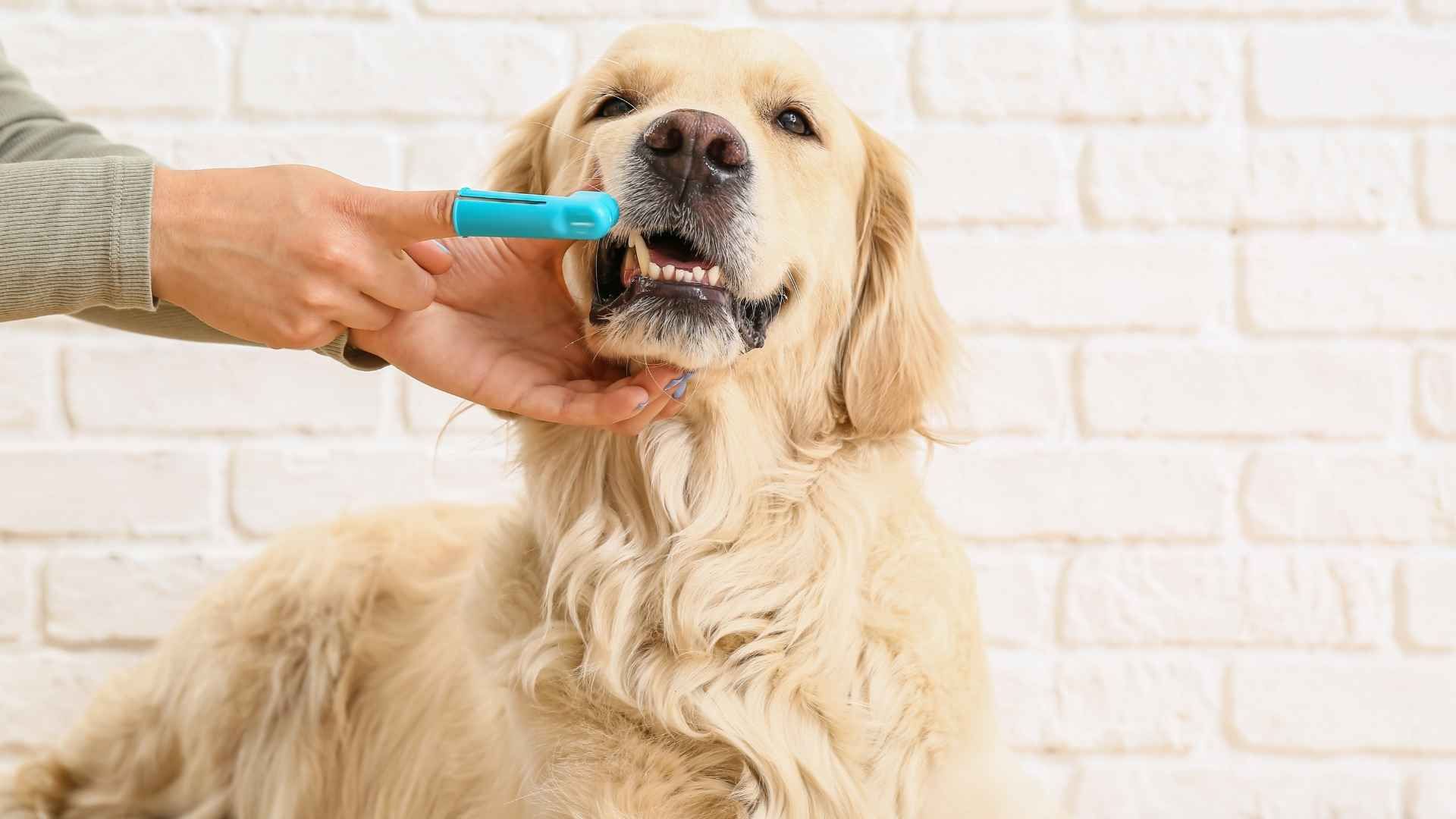Nobody enjoys dealing with dental issues, and the same goes for our beloved canine companions. Just like humans, dogs are susceptible to a variety of oral health problems, but some breeds are more predisposed than others. For many pet parents, dental care becomes a frequent and costly concern, especially when their pup is prone to overcrowded teeth or periodontal disease.
Small breeds and toy breeds, though undeniably adorable, often have trouble fitting all 42 adult teeth into their compact mouths, making them especially vulnerable to tooth decay and infection. Similarly, breeds with long, narrow muzzles, like Collies and Dachshunds, can develop deep periodontal pockets, while brachycephalic dogs such as Pugs face a host of dental challenges due to their smooshed facial structures. Genetics plays a significant role in determining dental health, and your choice in breed could mean the difference between chronic vet visits and a healthy smile.
If you’re hoping for a dog whose dental upkeep is relatively simple, you’re in luck. Let’s explore the top breeds known for their naturally healthy teeth and lower dental maintenance needs.
Dog Breeds With Minimal Dental Needs
1. Golden Retriever
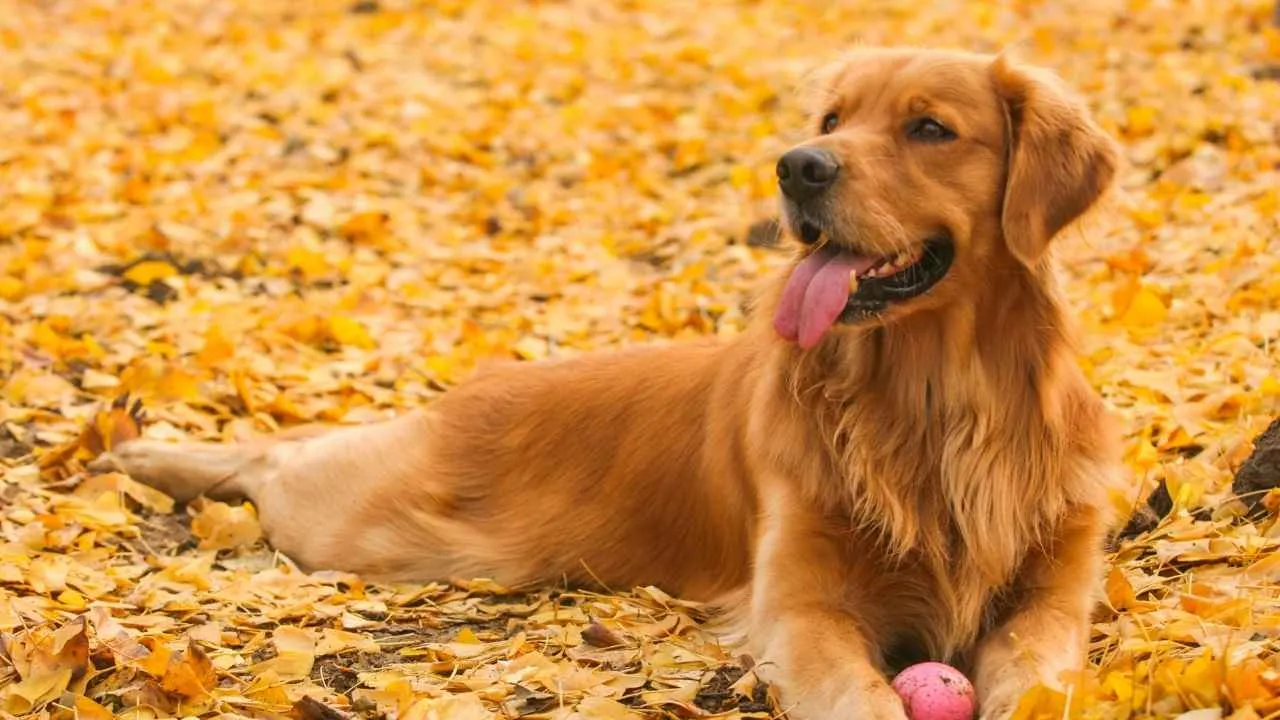
Also known as the “Scottish Retriever,” the Golden Retriever originated in 19th-century Scotland at the Guisachan estate of Lord Tweedmouth. The AKC describes the Golden Retriever as a spirited and beautiful gundog. It quickly gained recognition for its intelligence, loyalty, and striking appearance.
This medium-sized breed typically stands between 21.5 to 24 inches tall and weighs around 55 to 75 pounds. Goldens belong to the Sporting Group and are cherished for their friendly eyes, broad skull, and silky golden coat.
With a life span of 10 to 12 years, they remain playful and sociable well into adulthood. These dogs are not only family-friendly and trainable but also maintain excellent oral health.
Golden Retrievers tend to have strong, healthy teeth and are not commonly affected by dental diseases, making them an ideal choice for owners looking to minimize veterinary dental care.
Care Needs
Golden Retrievers thrive in active households that allow them to burn off energy through daily exercise. They benefit from brushing 2–3 times a week to manage their heavy shedding. While they aren’t excessive droolers, routine grooming and regular tooth brushing help maintain their healthy, clean smile.
Fun Fact: Golden Retrievers are known for their exceptional scenting abilities and often serve as skilled service dogs!
2. Rottweiler
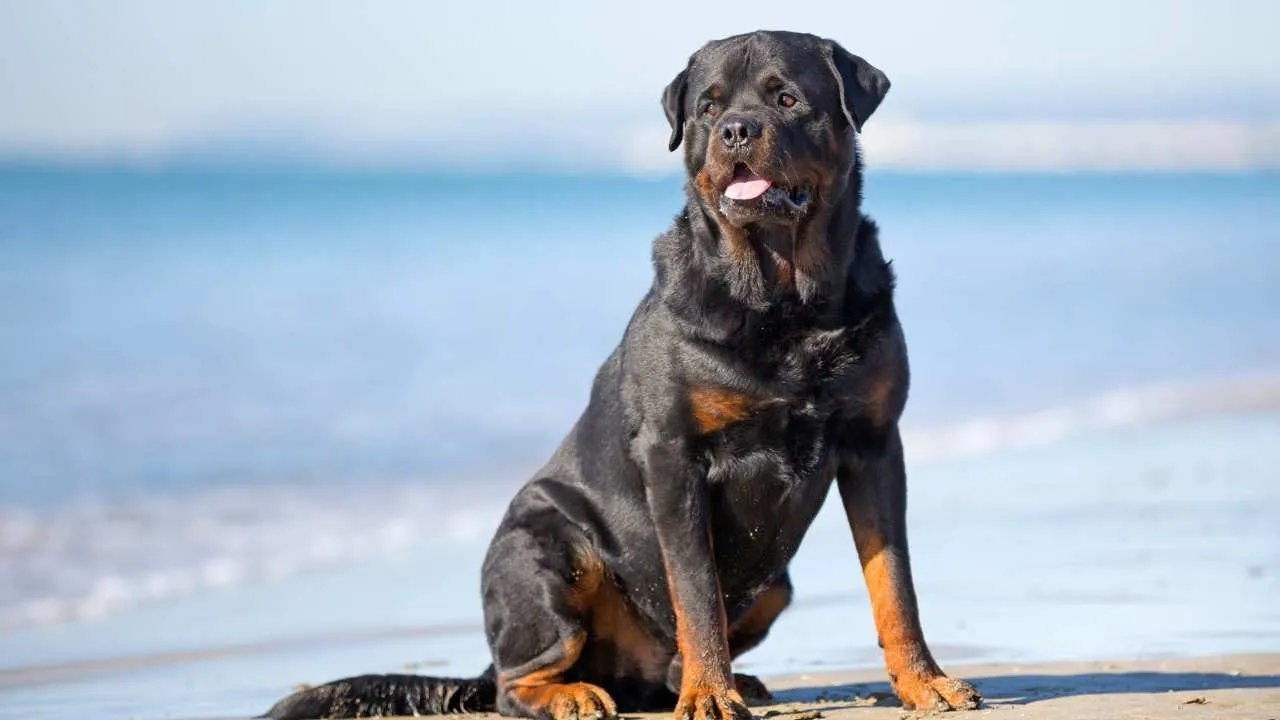
Also known as the “Rottie,” this breed hails from Germany and traces its ancestry to ancient Roman drover dogs. Built for endurance and power, the Rottweiler stands out with its muscular frame, broad head, and distinct black coat with rust-colored markings.
Classified in the Working Group, Rottweilers typically reach heights of 22–27 inches and weigh between 80–135 pounds. PetMD describes Rottweilers as a larger dog breed featuring a broad head, short coat, and widely spaced eyes. Their lifespan ranges from 9 to 10 years.
While they are widely recognized for their roles in military and police work, these dogs are also known for their unwavering loyalty and surprisingly playful temperament at home. Contrary to their imposing appearance, they can be deeply affectionate and gentle with family members.
Care Needs
Rottweilers are intelligent, slow-maturing dogs that require both physical and mental stimulation to thrive. They need at least an hour of exercise daily to maintain optimal health and behavior. Without sufficient activity, they may become bored and engage in destructive habits.
Grooming is relatively simple due to their short coat—weekly brushing will usually suffice. Their dental health is another bright spot: Rotties are blessed with strong, well-aligned teeth and typically have minimal dental concerns, requiring only routine brushing and checkups to maintain their oral health.
Fun fact: Despite their tough-guy image, Rottweilers are famously clownish and loving with their families!
3. German Shorthaired Pointer
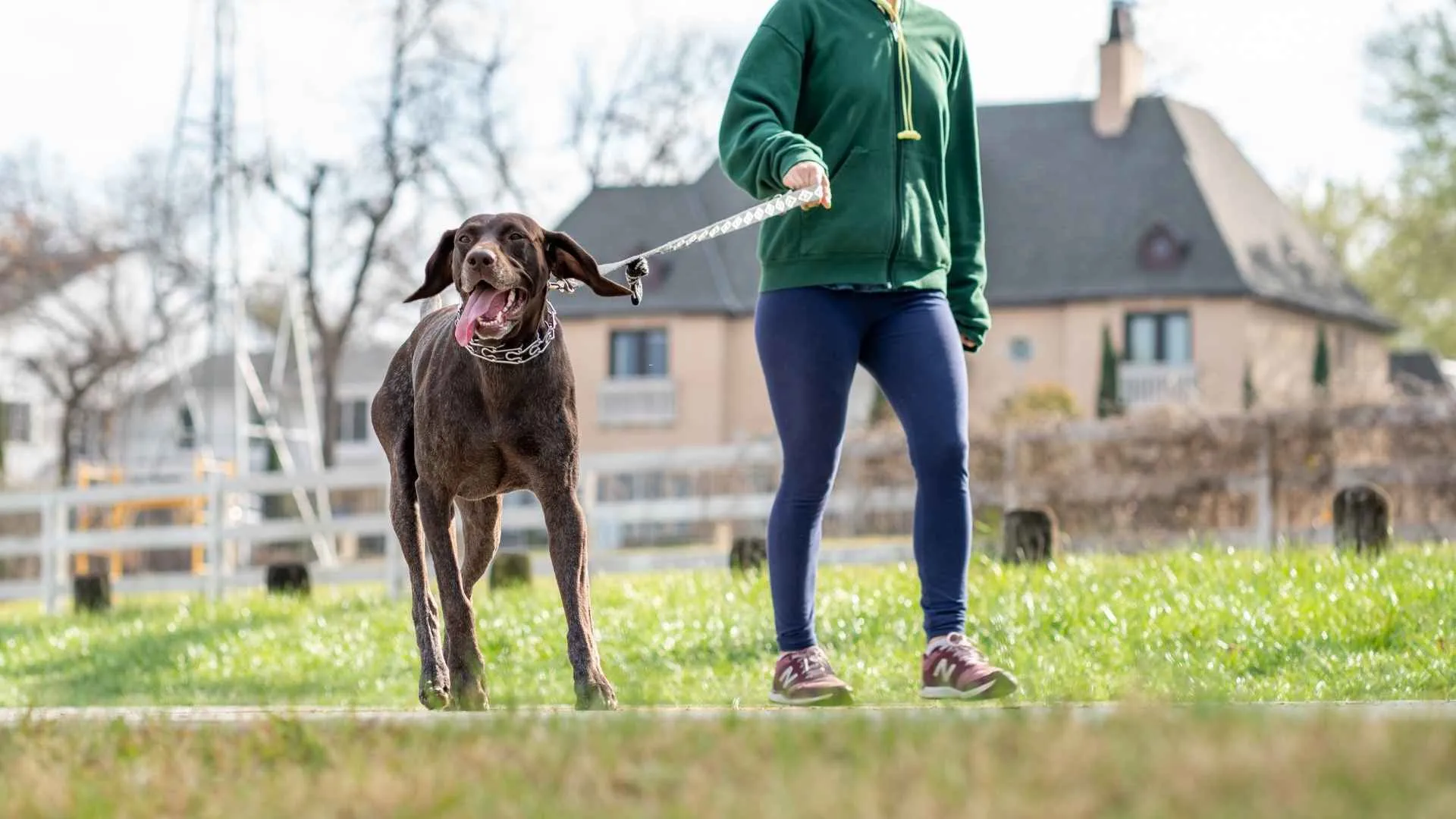
Athletic, alert, and versatile, the German Shorthaired Pointer is a medium-sized sporting dog celebrated for its keen nose and legendary pointing ability—traits rooted in its Bloodhound lineage. WebMD states that German Shorthaired Pointers are friendly and fun-loving dogs.
Males typically stand about 24 inches tall and weigh between 55–70 pounds, while females average 22 inches and 45–60 pounds. Bred in 19th-century Germany for hunting and companionship, the GSP is part of the Sporting Group and lives between 10 to 12 years.
Its lean, muscular frame and short, dense coat make it easy to groom and less prone to shedding. The breed’s dental health is also commendable, with fewer structural issues than many other small dog breeds or brachycephalic breeds, making it a solid pick for those seeking minimal dental complications.
Care Needs
GSPs thrive on structure and stimulation. Their grooming demands are low—weekly brushing with a mitt or soft bristle brush is usually enough. Brushing their teeth at least twice a week helps maintain their naturally healthy gums.
Regular exercise is essential; without it, their boundless energy may turn into mischief. Provide leash-led walks, mental challenges, and a consistent, high-quality diet to support their active lifestyle. Ear cleaning and supervision indoors are key to preventing avoidable health issues.
Fun Fact:
The German Shorthaired Pointer’s ability to scent and point game makes it one of the most efficient and beloved hunting dogs in the world.
4. Siberian Husky
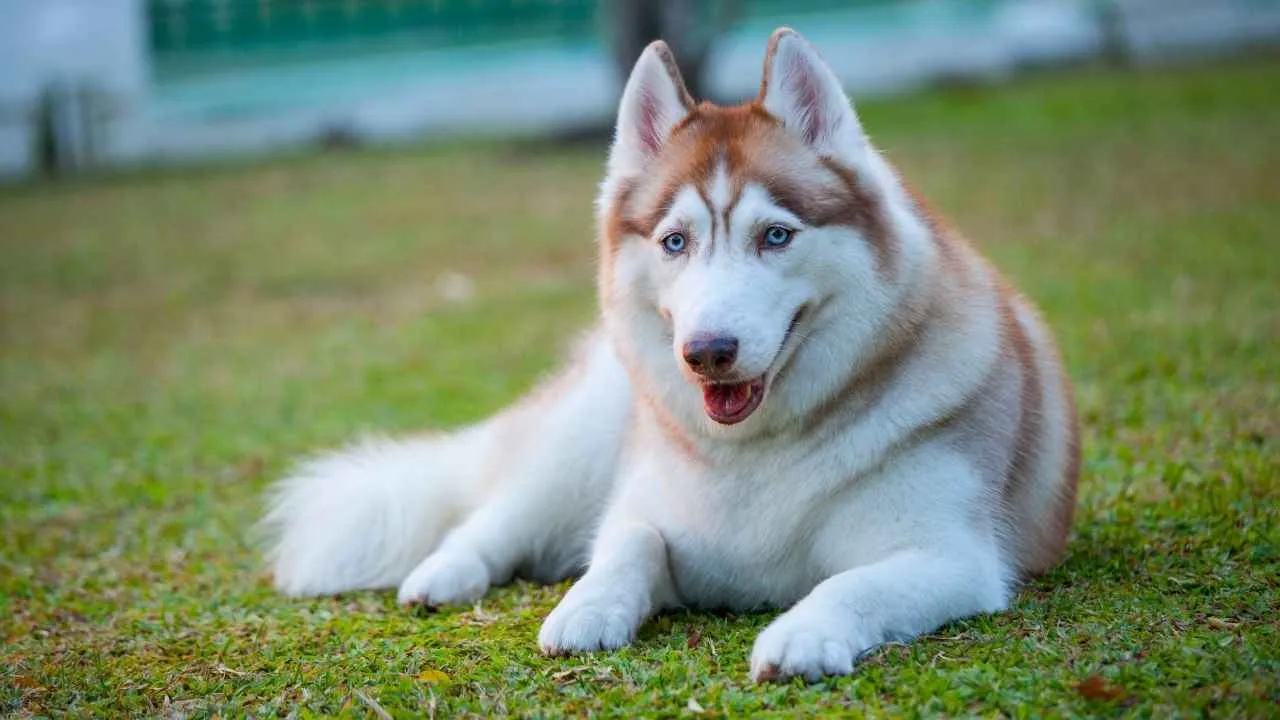
Also known as the Chukcha or Arctic Husky, the Siberian Husky is a strikingly beautiful and energetic breed with deep roots in northeastern Asia. Originally bred by the Chukchi people as resilient sled dogs, they are now beloved companions around the globe.
Huskies typically stand between 20 to 23.5 inches tall and weigh about 35 to 60 pounds. They belong to the Working Group and are recognized for their athletic build, thick double coat, expressive blue or multicolored eyes, and unmistakable wolf-like appearance.
This breed enjoys a long lifespan of approximately 12 to 14 years and, surprisingly, is not prone to the common dental problems many other breeds face.
Care Needs
Siberian Huskies thrive in active households and need at least 40 minutes of physical activity daily to stay mentally and physically healthy. A lack of stimulation can lead to destructive behaviors and vocal outbursts.
While they are not ideal for apartment living due to their howling tendencies, they do exceptionally well in homes with space to roam. In terms of dental care, Huskies benefit from their naturally healthy oral structure. Regular brushing, dental chews, and annual vet cleanings are typically sufficient to keep their teeth in great shape throughout their lives.
Fun Fact: Despite their tough, sled-pulling origins, Siberian Huskies are so friendly and sociable that they rarely make effective guard dogs.
5. Doberman Pinscher
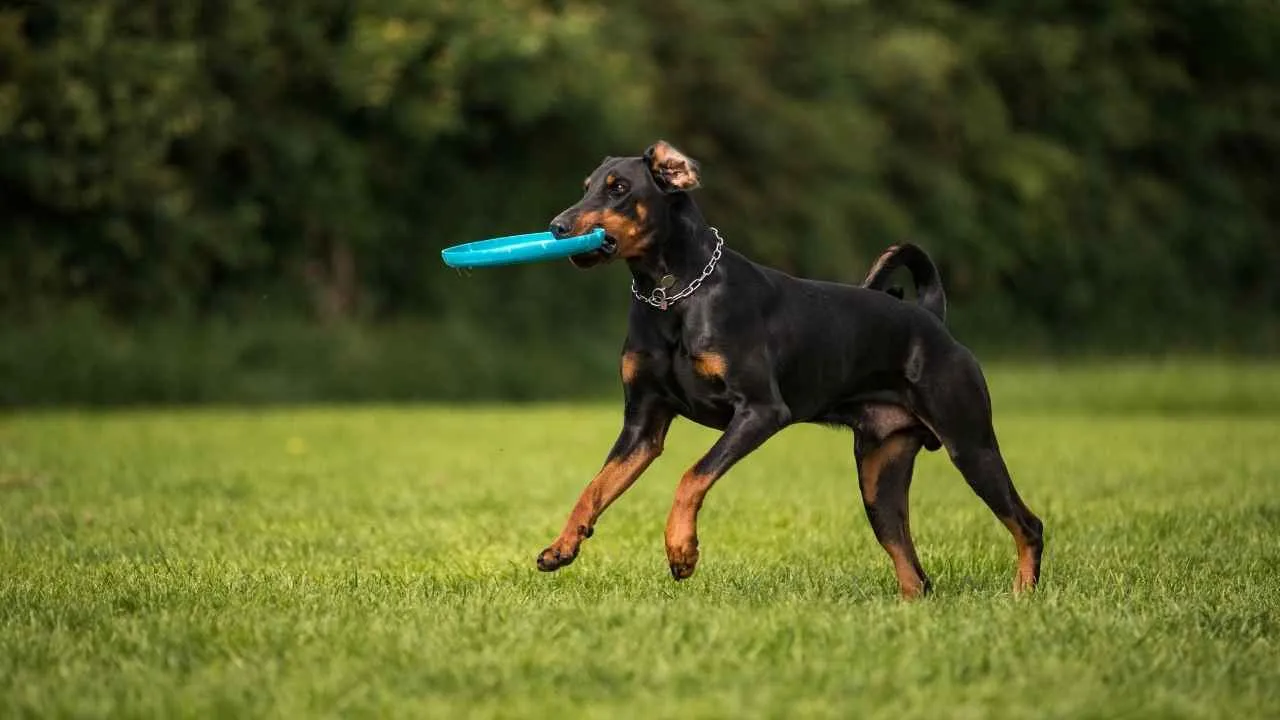
The Doberman Pinscher—also known simply as Doberman or Dobie—is a striking and intelligent breed with a storied background in protection and service. Originally developed in Germany by tax collector Karl Friedrich Louis Dobermann, these sleek, athletic dogs quickly became renowned for their loyalty and courage.
Standing tall at 26 to 28 inches for males and 24 to 26 inches for females, and weighing between 75–100 pounds and 60–90 pounds respectively, Dobermans possess a statuesque presence. Their short, glossy coats can come in shades of black, blue, red, or fawn, usually paired with distinct rust-colored markings.
Classified in the Working Group, this breed typically enjoys a lifespan of 10 to 12 years and is often celebrated for its regal posture, keen senses, and swift, confident movement.
Care Needs
Despite their reputation as formidable protectors, Dobermans are known for being affectionate with family members and sensitive to harsh training. Gentle, consistent guidance is key. Weekly coat brushing is typically sufficient to keep their short fur looking sharp.
When it comes to dental health, Dobermans are blessed with naturally strong teeth and jaw structure. Brushing their teeth two to three times per week is usually enough to maintain excellent oral hygiene.
Start this routine early and pair it with periodic dental chews or vet-approved rinses for best results. Regular vet checkups will help ensure their gums remain healthy and tartar-free well into adulthood.
Fun Fact: Dobermans are so naturally vigilant and confident that they often require no formal training to develop protective instincts.
6. Bernese Mountain Dog
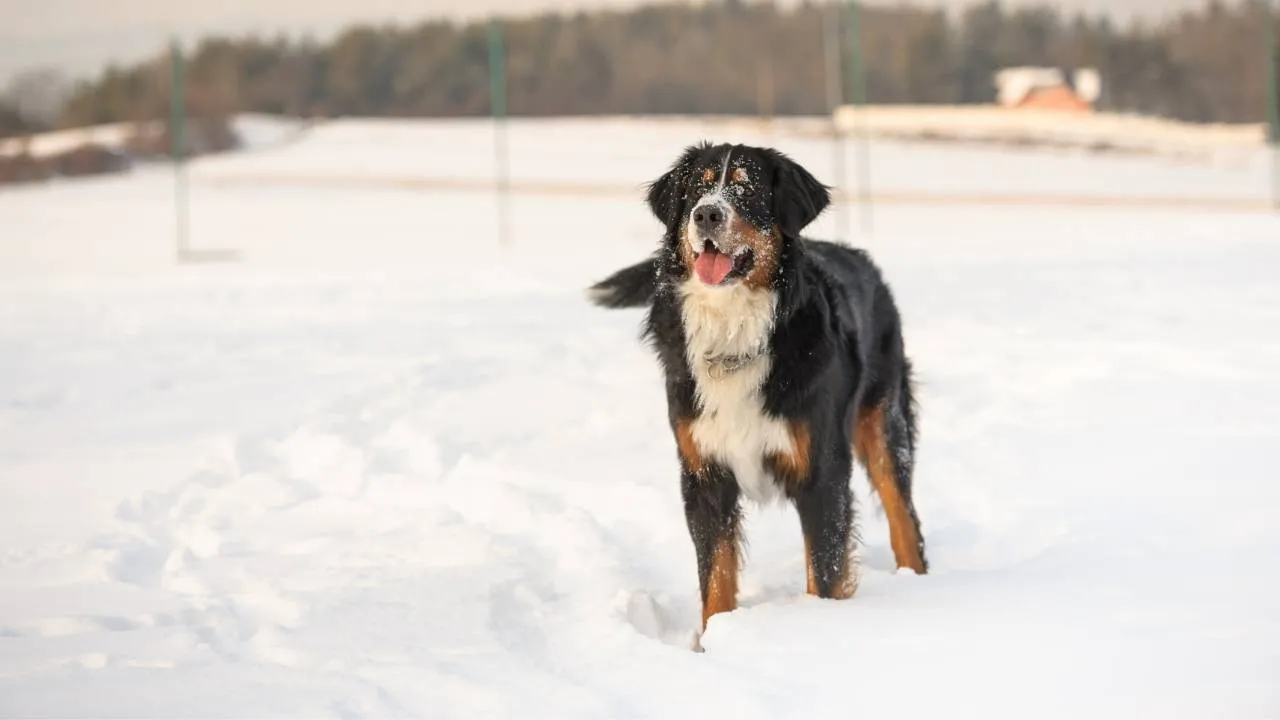
Also known as the Berner Sennenhund, the Bernese Mountain Dog hails from the Swiss Alps, where it was originally bred to work on farms. A proud member of the Working Group, this breed is admired for its strength, loyalty, and calm temperament.
Males typically stand 25–27.5 inches tall and weigh 80–115 pounds, while females are slightly smaller at 23–26 inches and 70–95 pounds. Their most distinct features include a long, thick tri-color coat (black, white, and rust), expressive dark brown eyes, and a gentle, affectionate demeanor that makes them excellent family companions. Berners have a life expectancy of 7 to 10 years.
Care Needs
Despite their large build and thick coats, Berners are surprisingly low-maintenance when it comes to dental care. With consistent at-home brushing and routine cleanings, they generally retain a strong, healthy set of teeth throughout their lives.
They’re not prone to overcrowding or abnormal jaw structures, which reduces the risk of periodontal disease. However, like all breeds, they still benefit from preventative care, such as dental chews and annual vet checkups.
These large breed dogs also require frequent grooming due to their shedding, and ample exercise to maintain physical health.
Fun Fact: Though their imposing size might suggest otherwise, Bernese Mountain Dogs are famously soft-hearted and incredibly gentle with children.
7. Vizsla
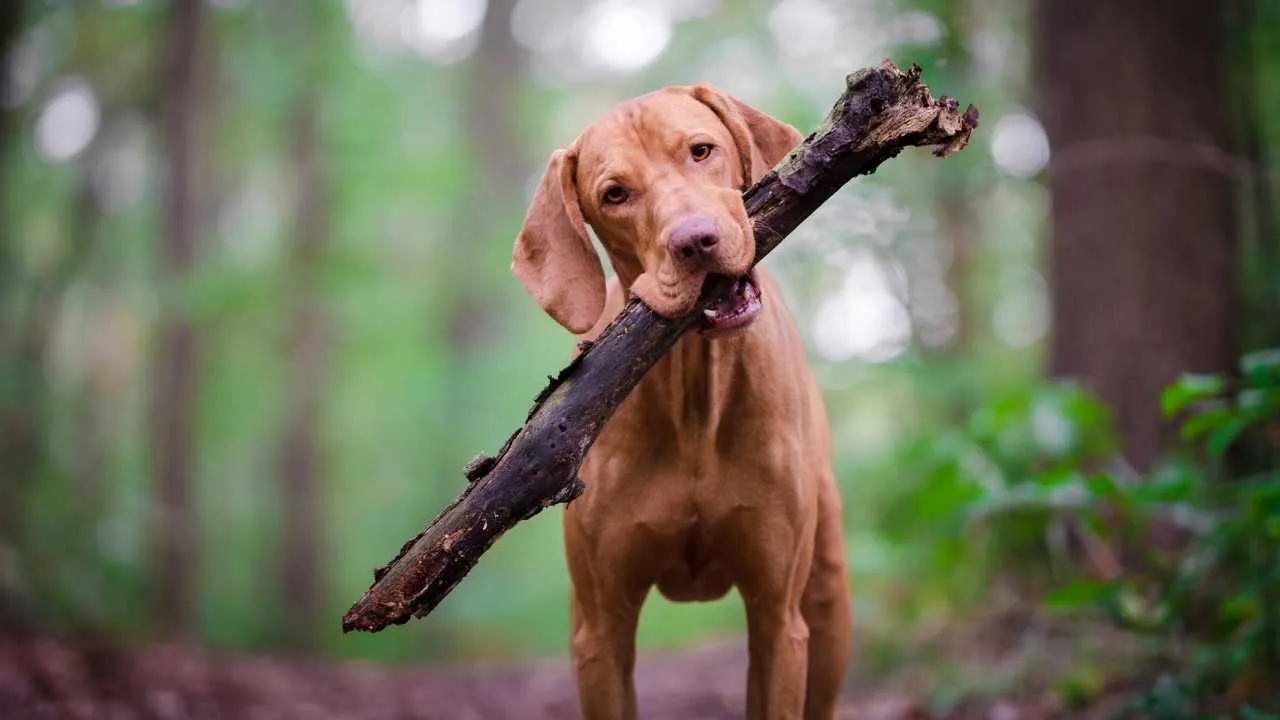
Also known as the Hungarian Vizsla or “Velcro dog” for its deep attachment to humans, this breed is a loyal, athletic companion with a rich history in European hunting culture. Believed to be one of the oldest sporting dogs, the Vizsla was bred to work closely with hunters in varied terrain—from open fields to wetlands.
Male Vizslas typically stand 23 to 25 inches tall and weigh between 55 to 65 pounds, while females are slightly smaller, measuring 21.5 to 23 inches and weighing about 45 to 55 pounds. With their rust-colored coats, expressive golden eyes, and sleek, muscular builds, they belong to the Sporting Group and usually live 12 to 14 years.
Care Needs
Vizslas are generally blessed with strong teeth and benefit from biweekly brushing to maintain excellent dog’s dental health. Their short coat requires only weekly brushing, and their ears should be cleaned weekly, even during puppyhood.
To keep them happy and out of trouble, mental and physical stimulation is essential. Feed a high-quality, age-appropriate diet and maintain consistent exercise without overexertion. Supervise closely indoors, as they’re known to explore with their mouths.
Fun Fact: Wirehaired Vizslas were originally bred not for aristocrats, but for working-class hunters who relied on a single gun and a single dog to provide food for the family.
Conclusion
While most dogs require regular dental care, choosing a breed with fewer oral health challenges can make a significant difference in your pet’s long-term well-being. Breeds less prone to plaque buildup and gum disease tend to have fewer vet visits and fresher breath, saving you both time and worry. Unlike dogs with small mouths like shih tzus or yorkshire terriers, which are more susceptible to dental crowding, the breeds we’ve highlighted generally maintain healthier teeth with basic care routines and proper diet.
Regardless of breed, every dog benefits from a consistent dental routine. Brushing your dog’s teeth regularly and offering safe chew toys can help control tartar and reduce bad breath. Even breeds with minimal dental needs aren’t immune to oral problems if neglected. So while selecting a breed known for better dental health is a smart start, preventative care and awareness are key to keeping your canine companion’s smile healthy and strong for years to come.


